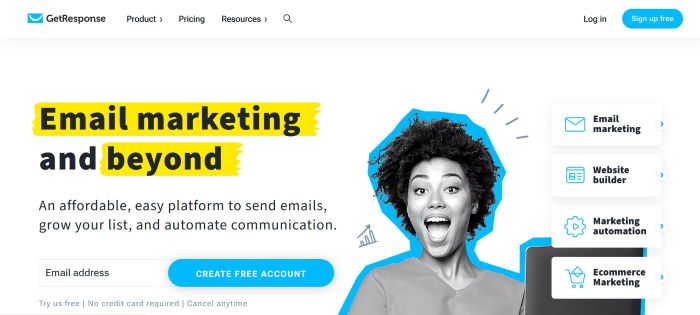Setting Email Marketing Objectives For Your Email Campaigns
Think of running after 100 targets. What do you get? Nothing but frustration. Same is the case for email marketing.
If there are no clear objectives set or there are too many objectives set one may only travel in concentric circles without reaching the target.
By setting clear objectives you can reach their target audience and motivate them to take action with relative ease and low cost thanks to the rise of email marketing.
Email campaigns are still a popular and efficient way to reach clients directly in this age of multiple digital communication platforms.
However, in order to get the most out of your email marketing efforts, it is essential to establish targets that are in line with your larger marketing and business objectives.
This article discusses the value of well-defined goals for email marketing campaigns and offers advice on how to establish and evaluate such goals.
An organization’s email marketing efforts can be improved by establishing specific goals and working towards them methodically.

Email Marketing Objectives
Table of Contents
How Email Marketing Can Help Your Business
Using email campaigns for advertising purposes has many advantages. First, when compared to more conventional kinds of advertising, email marketing is quite affordable.
It is perfect for companies with restricted marketing budgets because of the big audience it allows them to contact at a low cost.
In addition, the performance of email marketing campaigns can be easily measured by monitoring metrics like the percentage of recipients who opened the email, clicked on the link, and converted.
This information is crucial for planning future campaigns. In addition, organizations can increase engagement and conversion rates by targeting particular subsets of their audience with highly personalized content sent via email marketing.
Setting Specific Goals for Email Promotions
- Why it is important to have well-defined goals for your email marketing campaigns?
Email marketing campaigns are more likely to succeed when they have clear goals. A clear objective helps in having a clear direction which leads to businesses produce content that is relevant to their target demographic.
Email marketing campaigns might lack consistency and fail to generate results if their goals are not clearly defined. It is easy to get lost when there are no objectives.
Having well-defined goals also helps firms evaluate the effectiveness of their campaigns and make informed decisions about how to refine their strategies moving forward.
- Mistakes often made because of poorly defined or unspecific goals
Email marketing can fail if the goals are too broad or poorly defined. Without realistic and specified goals, businesses may have trouble producing relevant content or gauging the success of their initiatives.
Having goals that are too open-ended might cause misalignment and inconsistent messages among team members.
Goals for email campaigns should be SMART, meaning they should be specific, measurable, attainable, relevant and time-bound.
Important Elements in Defining Goals
- Learning the Big Picture of Marketing
Understanding the company’s overall marketing plan is the first step in setting clear goals for email campaigns.
Businesses should make sure that their email marketing efforts are consistent and align to the entire marketing plan. This can be done by coordinating email campaigns with the larger marketing goals.
- Harmonizing personal and professional aspirations
Aligning the goals of email campaigns with those of the business is essential for setting effective targets.
Whether the end goal is to boost revenue, site traffic, or customer engagement, it needs to work in tandem with the company’s larger objectives.
By coordinating in this way, you can be sure that your email marketing efforts are producing meaningful results.
- Setting clear and quantifiable goals
Having goals that can be both defined and measured is essential for success. In order to be effective, goals must be well-defined and detailed.In addition, goals should be quantifiable so that development may be monitored and outcomes assessed.
Businesses may track the success of their email marketing and make any required adjustments by defining clear and quantifiable goals.
One example of specific goal is to double the number of people who open your emails within the next three months. In metric terms if your CTR is 10%, your goal for the next three months is to take it to 20%.
Determining Your Audience
- Finding Your Audience Through Market Research
Targeting the right people is crucial for the success of any email marketing campaign. By conducting market research, companies can learn more about their target audience’s profile, buying habits, preferences, and pain issues.
With this knowledge you can craft meaningful campaigns that attract and retain customers. Also take time to clean your email list by categorizing subscribers using their interest metrics.
- Targeting Can Be Improved By Dividing The Audience Into Smaller Groups
By segmenting the target market based on factors such as demographics, shopping habits, or engagement levels, you can tailor the communications to better appeal to individual customers.
This method improves the chances of attracting the attention of the intended audience and inspiring them to do the desired action.
- Goal-setting That Takes Into Account Audience Composition And Activity
It is essential to think about the audience’s traits and habits when establishing goals for an email campaign.
Businesses can better serve their customers if they have a firm grasp on what drives and interests their target demographic.
E.g – You have noticed that a certain subset of your audience responds favorably to discounts, you could use email marketing to drive more conversions by giving them access to special offers.
Through can improve the effectiveness of their marketing campaigns by establishing targets based on the qualities and actions of their target audiences.
Setting Reasonable Goals for Your Email Campaign
The success of your email marketing initiatives depends on your setting specific, attainable goals. The most effective goals are those that are both specific and precise.
The goals of your campaign should be stated explicitly in your objective statements. For the sake of clarity and ease of comprehension, keep them succinct and to the point.
Using the SMART criterion provides a useful structure for goal-setting. Smart, Measurable, Achievable, Relevant and Time-bound.
Your goals should be well-defined in terms of what it is that you hope to achieve. Try quantifying the same so that you can track the progress.
Here are a few examples of well-defined goals for an email marketing campaign to get your creative juices flowing:
- Raise the percentage of people who open your emails by 15% in the next quarter.
Get 50 new email subscribers every month that are ready to buy. - Raise our most recent product launch email’s CTR by 10%.
Metrics and Tracking for Assessing Progress
Understanding the efficiency of your email marketing requires tracking and measuring the performance. To gauge your progress, it is important to keep a close eye on a few crucial metrics.
There are many metrics that can be used to evaluate the success of an email campaign. E.g. – CTR, Open Rate, Bounce Rate etc.
By examining the metrics you will get an idea as to where things stand and where changes should be made.
Google Analytics, MailChimp, and HubSpot are few of the analytics tools available that can help you in tracking your metrics and progress toward your goals.
Using the information provided by these tools you can evaluate the efficacy of your email marketing campaign.
By analyzing the data you may spot patterns, gain insight into how your target audience behaves and make educated judgments on how to improve future advertising campaigns.
Issues in Establishing Email Campaign Goals
Although it is essential to have well-defined goals, there may be some issues that you need to be familiar with. It might be challenging to strike a balance between immediate and long-term goals.
Long-term goals are crucial to ensuring continued success, development and audience building whereas shorter-term targets tend to be more reactive.
The secret to success is in striking the correct balance between the two.
Limits on available resources are another source of difficulty. Constraints on resources (financial, human, or technological) might hinder efforts to reach goals.
It is crucial to optimize the resources at hand and come up with innovative approaches to problems.
In addition to that keeping up with the ever-changing pace of technology and industry developments can make goal-setting a challenge.
Keeping abreast of current events and making use of developing technologies will allow you to modify your goals and methods as needed.
Guidelines for Planning Effective Email Campaigns
Here are some best practices to keep in mind while planning and executing an email marketing campaign:
Your goals should be reviewed and revised on a regular basis to account for campaign success. Regular data analysis will help you spot problem areas and adjust your focus accordingly.
Team up with people from different departments to achieve more. The company’s marketing, sales, and customer support teams should all be included in the process of goal alignment.
Improving campaign outcomes requires constant testing and modification. Test with various subject lines, email formats, and calls to action to find what works best with your target demographic. To determine which of two or more email versions performs best, use A/B testing.
Conclusion
Email Marketing can be a great distribution channel if you are able to optimize your email campaigns. Setting up your email marketing objectives is a first step towards building an audience and optimizing email campaigns.
1. Why is it critical to have well-defined goals for email campaigns?
Your email marketing efforts will be more focused and effective with well-defined goals. They will help in articulating your campaign’s purpose and informing your choices as you develop and implement it. Having well-defined goals allows you to assess the efficacy of your campaigns, spot weak spots and fine-tune your email marketing strategy.
2. How can I make sure the goals of my email campaign are clear and quantifiable?
The SMART criteria can help you set goals for your email marketing strategy that are both attainable and quantifiable. Establish specific goals such as a 15% increase in open rates or the creation of 100 new leads. Create measurable goals and objectives so that you can evaluate your performance along the way.
3. Why is it so difficult to define success criteria for email marketing campaigns?
Maintaining flexibility and shifting consumer preferences are two examples of persistent difficulties. Finding a balance between short-term achievements and long-term goals is essential. The availability of funds or personnel can also limit what can be accomplished. It is also important to keep abreast of developments in one’s field and to adapt one’s goals accordingly.
4.How frequently should I revisit and revise the goals of my email campaign?
Your email marketing goals should be reviewed and revised frequently, preferably after each campaign but at the very least once every month. Compare the results of your campaigns to the goals you established, examine the data and comments you have received and make any necessary improvements. You can enhance the success of future email marketing efforts by implementing a system of continual evaluation and optimization.
Jason is an email and automation expert with over 7+ years of experience. He has worked with several SaaS companies to help them scale their revenue. Jason's first love is mountains.






